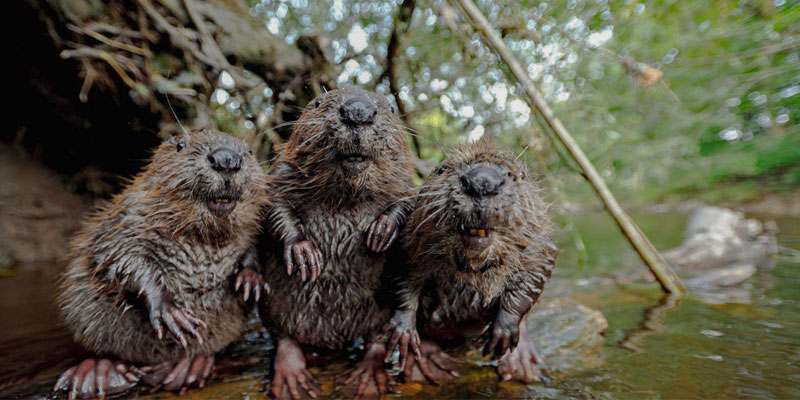The family Castoridae includes all modern beavers and their fossil relatives. There is only one genus, Castor, containing two species: Castor fiber, the European beaver and C. canadensis, the North American Beaver. The geologic record of this family extends back to the Oligocene, with Castoroides and Palaeocastor being well known extinct members. Members of Castoridae occupy the northern temperate zone, where they serve an important ecological role. They often fell trees while feeding on bark and leaves, and their preferences for certain tree types have an impact on the tree species composition in the surrounding area. Their building of dams, and digging of canals and burrows, modifies the streams and lakes in which they are active. The resulting flooding creates habitats for various different species of wildlife, which is why they are often described as ‘ecosystem engineers’.
Castorids live in small family groups, and mark specific territories with scent mounds. When frightened, they loudly slap the water with their tails as a warning to their family and as a method of startling any potential predator. They are semiaquatic, and use a pelage of long guard hairs and dense underfur for insulation. This coat has made them a target for fur trappers in the past. To aid with their locomotion in water they have a flattened tail and webbed hind feet. Their eyes are protected by a nictating membrane, while special muscles allow them to close their nostrils and ears when swimming. An interesting characteristic of castorids is that their epiglottis lies above the soft palate in the narial passage. This allows air to enter their windpipe and lungs without flowing through the mouth cavity. The back of the tongue can also rise up to fit against the palate, blocking the passage of water from the mouth into the digestive system. These characteristics allows castorids to open their mouth underwater to gnaw or carry branches, while still breathing when the nose is held above water. Their powerful swimming and ability to stay underwater for four to five minutes at a time allow castorids to travel up to 750m at a time.






